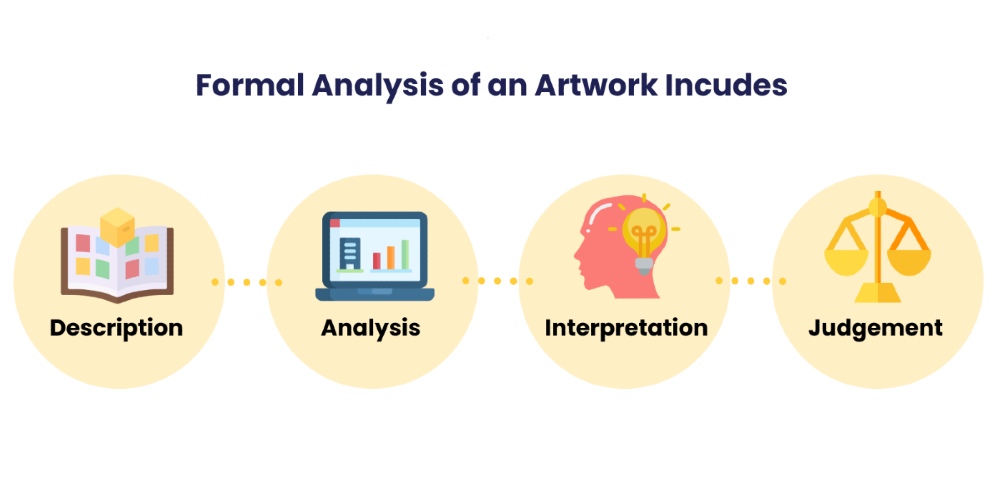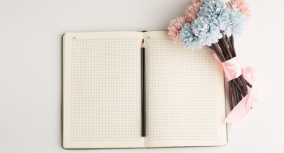An art critique paper involves a comprehensive analysis and assessment of an artwork. Though this looks a bit complicated, the task doesn’t require a lot of time if you have sufficient critique writing skills. It’s an interesting assignment for students of art colleges as well as high schoolers. All you need is to study some art critique examples and learn some effective techniques. It will help make your essay creative and attention-grabbing.
This article by Custom-writing experts will show you how to write an art review and criticism. It will serve as a guideline for your excellent paper! On the page, you will see all the basic information as well as tips and art critique templates.
🎨 Art Critique: Basic Information
Critical analysis of artwork stimulates and encourages the discussion of art. When you write it, you express your opinion. And when you receive a critique, you learn from others. Every person evaluates art differently. Some pay extra attention to the color scheme and composition. Others appreciate realistic qualities in artworks. And some people look for expressiveness and emotion.

You may think that because of these differences, we can’t objectively critique art. Luckily, there is an accepted way to conduct a formal analysis of an artwork. It’s called Feldman’s method, and it consists of four elements: description, analysis, interpretation, and judgment. More information on these elements can be found in section 3.
What Is a Critique in Art?
Critiques provide a platform for experts to analyze and interpret particular artworks. They not only offer insights into the aesthetic qualities and cultural significance of the piece but also contribute to its broader reception. Through thoughtful evaluation, criticisms help the general public understand the complexities of a work in question.
How to Critique an Artwork?
To effectively comment on an artwork:
- Identify the genre, style, and epoch of the artwork.
- Note the typical features of this genre, style, or epoch.
- Note the elements that differ from the typical characteristics. What makes the artwork unique and unconventional?
- Contextualize the artwork within the broader context, considering other works by the same artist or similar pieces from the same period.
👣 How to Write an Art Critique Step by Step
STEP #1. Create an outline before you start writing.
It will help you develop the structure of your essay. In the draft, answer these questions:
STEP #2. Decide on what info about the artwork you will need.
Then use credible sources to collect all the necessary data.
STEP #3. Provide a clear thesis statement.
A thesis here would be the main idea that would reflect your vision of an artistic piece. Don’t underestimate the importance of a thesis! It will guide you through writing the entire essay. It will also help your readers understand your art criticism better.
STEP #4. Note your first spontaneous reaction to the artwork.
By the end of the process, you may better understand your first impression or even change your mind!
STEP #5. Write the main body using Feldman’s method.
Study the artwork and assess its content, as well as its purpose. Explain which features of the piece of art you spot as the most exciting and less successful. Find more information on the elements of the method below.
STEP #6. Write your conclusions about the artwork.
They should base on all the information you have gathered.
🔬 Feldman’s Method: 4 Art Critique Elements
To write a perfect art critique paper, use the four elements mentioned before: description, analysis, interpretation, and judgment. Understanding these elements will allow you to evaluate any artwork thoroughly and objectively.
When you start writing a critique, remember that a useful analysis provides your view of the object’s strong and weak attributes.
Description
First of all, describe the artwork. At this stage, you don’t have to analyze anything. You just answer the question: what do you see?
Here are some essential questions that you might want to answer in your artwork description:
Example:
E.g., this is an oil painting of a woman in profile. She’s wearing a black dress in contrast with a brown background.
Analysis
The next step you take when writing an art critique assignment is analysis. To analyze an artwork means to evaluate how its elements correlate with each other. At this stage, you figure out what helps the artwork to convey an idea or a mood.
When writing this section, answer the following questions:
Example:
E.g., the tonal range of the painting creates a dark and brooding atmosphere. The sharp shadows create dramatic contrasts.
Interpretation
In this next section, we are looking for the meaning behind the artwork. It may seem like a tough task, especially if the artwork is cryptic or too unusual. But don’t worry: at this stage, the interpretation is entirely up to you!
Remember: you shouldn’t make your interpretation too arbitrary! Provide evidence and point out what exactly influenced your understanding of the artwork.
Here are the questions that you can answer while interpreting an artwork:
Example:
E.g., in this painting, the artist wanted to show us the king’s personality and achievements.
Judgment
And now it’s time to express your opinion! You’re deciding if the work succeeded in creating a mood or telling a story.
It’s essential to be objective when judging an art object. Remember: even if there’s something you don’t like, the work still can be successful! And don’t forget to provide evidence that supports your judgment.
Here are some points that can help you write the fourth part of your review:
Example:
E.g., the artwork successfully conveys the atmosphere of a battle through its composition and color scheme. Learning about its backstory helped me to appreciate the painting even more.
📜 Art Critique Examples
As you can imagine, all kinds of masterpieces are subject to art criticism. For example, you can choose to write about paintings, drawings, sculptures, or even buildings. And, naturally, all these forms of art have their specific features!
These tips will provide you with an art critique template for anything, be it an oil painting or a cathedral.
Painting Critique Examples
Paint is a medium that emphasizes light, colors, and space. You can discuss these and many other points in your critique.
Sculpture Critique Examples
Similarly, many specific factors influence the overall impression of a sculpture. Below are some things to pay attention to.
Architecture Critique Examples
You can write art critiques on architecture, too! Just bear in mind the points below.
Photography Critique Examples
Analyzing a photograph is a lot like critiquing a painting. Still, there are some unique features to consider.
Art Critique Topics
- Describe and analyze The Scream by Edvard Munch.
- Interpret the symbolism of Leonardo da Vinci’s The Last Supper.
- Examine the painting techniques used by Van Gogh when creating The Starry Night.
- Analyze and compare Mona Lisa by Leonardo and The Starry Night by Van Gogh.
- Explain why Claude Monet’s Impression, Sunrise differs from a typical impressionist work of art.
- Compare the sculptures of David by Donatello, Verrocchio, and Michelangelo.
- Discuss the historical significance of Kritios Boy sculpture.
- Describe the effect of Kevin Carter’s photography Starving Child and Vulture on you.
- Critique of Study for the Head of Julius Caesar by Andrea Del Salto.
- Compare the themes and specifics of Tiziano’s The Assumption of the Virgin and El Greco’s Burial of Count Orgaz.
- Explore the meaning of The Sacred and Profane Love by Titian.
- Analyze the peculiarities of Francisco Goya’s technique in his diptych, The Clothed Maja and The Naked Maja.
- Describe the statue of Lady Sennuwy and its cultural and historical value.
- The specific features of The Beheading of Saint John the Baptist by Caravaggio.
- Critical analysis of Mary Cassatt’s painting Louise Nursing her Baby.
- Explain how using lines and contours, Michael Sweerts adds realism to his painting Head of a Woman.
- The use of composition and color in Pierre Bonnard’s The Breakfast Room.
- Analyze The Return of the Prodigal Son by Rembrandt van Rijn.
- Discuss the significance of Olympia by Edouard Manet.
- Examine Domenico Ghirlandaio’s Portrait of Giovanna Tornabuoni.
- The visual details and the message behind the photograph The Starving Boy in Uganda by Mike Wells.
- Analyze the use of colors in Flaming June by Frederic Leighton.
- Discuss the similar details in the architecture of The Palatine Chapel at Aachen and St. Michael’s Chapel in Hildesheim.
- Describe Self-Portrait with Bandaged Ear by Vincent Van Gogh.
- Critique of Spirit Spouse sculpture.
- Explore the unique architecture of Egyptian tombs.
- Analyze the scene depicted by Winslow Homer in A Visit from the Old Mistress.
- Present your impressions of Edward Weston’s photograph Pepper No. 30.
- The interpretation of the photograph Afghanistan Girl by Steve McCurry.
- Critique of the Basilica of San Vitale in Ravenna as an example of Byzantine mosaic work and architecture.
- Present your interpretation of Pablo Picasso’s Demoiselles d’Avignon.
- Compare the paintings Christ Crowned with Thorns by Matthias Stom and The Luncheon on the Grass by Édouard Manet.
- Biltmore Manor as a bright example of American architectural style.
- The role of lines and proportions in The Thinker by August Rodin.
- Describe Robert Rauschenberg’s Monogram and your impressions of it.
- Give the critical analysis of Henri de Toulouse-Lautrec’s style using Salon de la Rue Des Moulins as an example.
- Analyze the style and composition of Nighthawks by Edward Hopper.
- The style and thematic elements of Frederic Remington’s Indian Fire God.
- Discuss the details of the painting Toy Pieta by Scott Avett and the feeling it evokes.
- Analyze Michelangelo’s The Birth of Adam.
- The role of shape and color in the painting The Broken Column by Frida Kahlo.
- Examine the distinguishing characteristics of Charles White’s drawing Hand.
- The hidden meaning of the abstract expressionist’s works Number 1 (Lavender Mist) by Jackson Pollock and Number 61 (Rust and Blue) by Mark Rothko.
- Discuss how Claud Monet uses color to create the desired atmosphere in his painting Arrival of the Normandy Train, Gare Saint-Lazare.
- Analyze the example of Neo-Babylonian art: Panel with Striding Lion.
- Describe Mondrian’s painting Boogie Woogie on Broadway.
- Explore the effect of Paul Cézanne’s technique on the viewers in Still Life with Apples and a Pot of Primroses.
- The importance of color in The Sick Heart by Paul Klee.
- Discuss Vincent van Gogh’s manner and choice of color in his painting The Potato Eaters.
- Describe the traits that make The Family of Charles IV by Francisco de Goya a satiric work of art.
🔗 References
- Art criticism and formal analysis outline
- Teaching Students to Critique
- How to Judge Art: Five Qualities you can Critique whether you’re an Artist or not
- The Most Influential Art Critics Today
- Magazines About Art and Online Newsletters
- The Steps to Art Criticism: The Virtual Instructor
- How to Analyze an Artwork: Step-by-Step Guide: Student Art Guide
- Visual Analysis Guidelines: Skidmore College
- Exploring Photographs: Khan Academy
- Guidelines for Analysis of Art: University of Arkansas at Little Rock
- How to Critique Your Painting: Artists Network











![Precis Example, Definition, & Writing Guide [2026]](https://custom-writing.org/blog/wp-content/uploads/2022/02/education-concept-student-studying-brainstorming-campus-concept-close-up-students-discussing-their-subject-books-textbooks-selective-focus-284x153.jpg)
‘Nice flow of brightness’ is a typical representative of comments generated by the jargon of art critiques I got from a friend painter when I exposed one of my paintings on Facebook. Utter nonsense with no artistic value, just to please me, a beginner in painting.
THANKS
wow, thank you so much, I`m an artist I want to know whether you have a sample platform i can give you my work for some simple criticism.
Thank you for your question. Unfortunately, we don’t have such a platform.
Thank you so much for this information! Came in clutch and helped me to write a better art critique paper!
Thank you so much for this very informative topic. More power to you guys!
I really enjoyed this website. It was pretty good. I’m telling you that I’m glad.
Thanks so much for this information. Very helpful! Keep this great work up!
These are pretty useful art critique writing tips! Thank for such help with writing art critiques. My best to you!